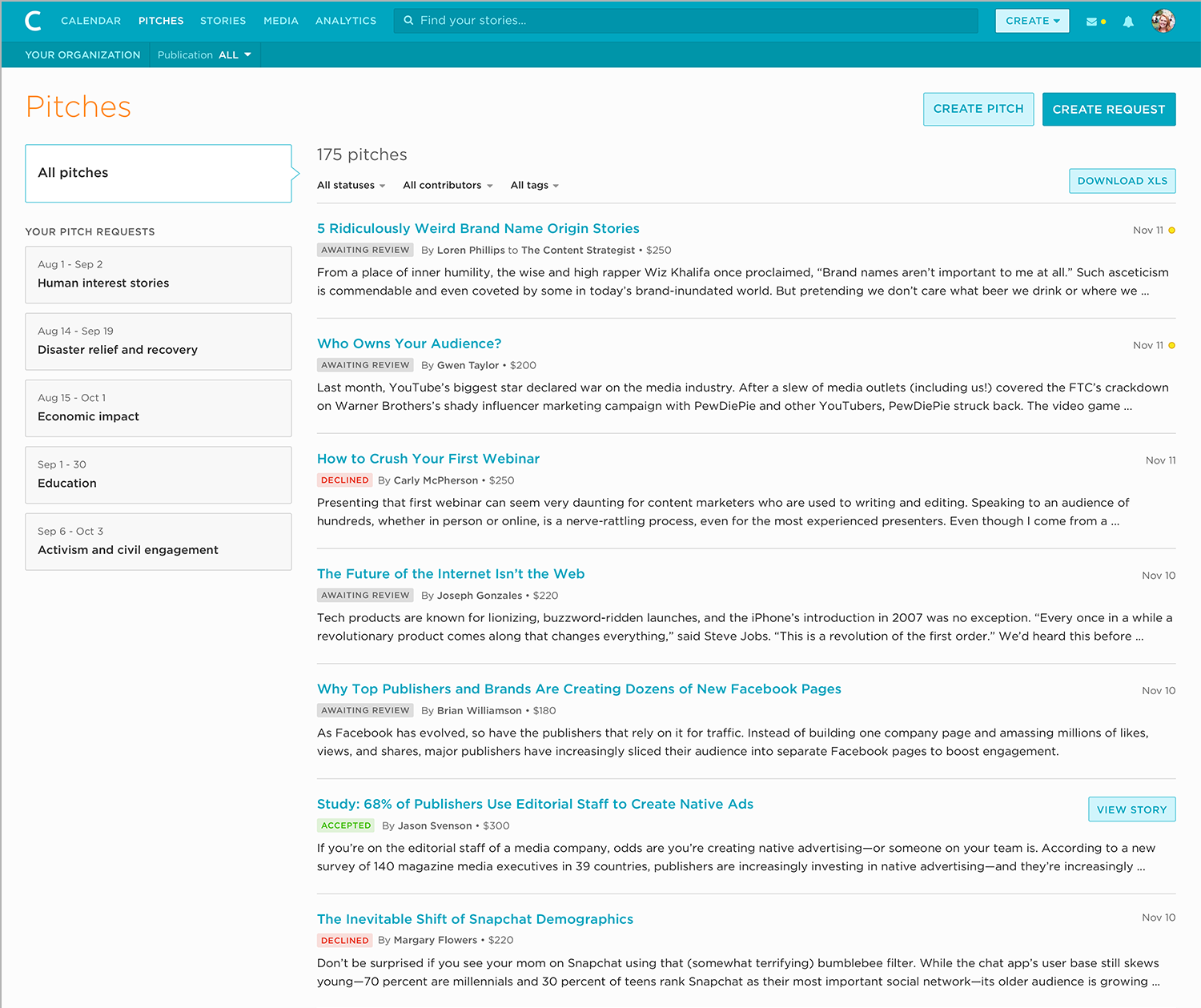Brands
Attention Editors: We Need to Fix the Pitching Process
Every few months, I pitch a story to an editor I’ve known since last year. This editor seems like a good guy. He’s pleasant, thoughtful with feedback, understanding if I ask for an extension. We even trade some personal banter once in a while. But whenever I send over the pitch, he never gets back to my first email. I always have to follow up a week later, sometimes two. We do the little dance—apologies for the delay, no worries, was crazy busy, etc. I could never confirm this, but I get the sense he looks at the initial pitch and intentionally waits for the reminder email before responding.
To be clear, I’m not casting a stone. As a fellow editor, I’m often guilty of similar infractions, even if they’re unintentional. Right now, 1,285 unread messages sit in my inbox, including a few pitches from freelancers or marketers looking for a guest byline on The Content Strategist. Ideally, I get back to everyone immediately—and I respond to most pitches within a few days. But a few slip through the Gmail cracks, pushed down below important emails from colleagues and unimportant outreach emails with subject lines like “HUGE WEBSITE PROBLEM – I CAN HELP.” Then I forget about the pitches, until a week or two goes by and I receive a helpful reminder from the writer.
The system needs to be better.
When I launched The Freelancer in 2014, during my rookie year at Contently, I wrote that “becoming a freelancer is like choosing to fight a battle you know you’ll eventually lose.” Since then, the battle has improved. There’s more infrastructure for self-employed creatives and more places willing to pay them good rates. But if there’s one area that’s worsened, it’s the communication between freelancers and the decision-makers who commission work. That’s why Contently’s pitch feature has been such an important part of our platform.
The purpose of the feature is simple: It organizes freelance ideas in one place that’s free of clutter and distraction. Editors evaluating pitches can accept, decline, or start a thread if they have questions and want more information. There’s also a place for pitch requests, which companies can use if they already have a theme in mind and want to put out a call for new ideas.

From a creative perspective, pitches have fueled great content from brands and media companies alike. But a more structured system only helps these companies streamline the editorial process and produce better work. (Editors could always try to hack together a workaround by manually adding pitches to folders in Gmail, but that doesn’t solve the underlying problem in the way that a technology platform can.)
My biggest fear as a freelancer is never hearing back. A rejected pitch hurts, but at least you can move on instead of torturing yourself with the possibility that nobody looked at your idea. My biggest fear as an editor, meanwhile, is not having enough time. Editors handle so many small tasks that add up over the day, and I’m always running through a mental checklist to fill out that spreadsheet, schedule that meeting, and answer that forgotten email. Keeping both sides connected eliminates those fears.
Besides, as everyone in the media world obsesses over data and insights, shouldn’t we analyze pitches the same way we do audience stats? In our platform, I can sort pitches by contributor or category to see if any trends show up. So if John Smith submitted 12 pitches over the last year and I accepted four, then I should be able to give him better (and quicker) feedback. Maybe he succeeds when pitching stories about Facebook. Or maybe feature articles with multiple interviews fare better than proposed Q&As. Either way, looking at all of that information lined up in a central location should make us both better at our jobs.
I don’t expect editors to change their habits overnight. Even some of the best freelance advice out there makes it clear that contributors will have to get comfortable nudging editors about their pitches. But there is a better way that’s helped some brands become incredibly efficient and effective publishers. For everyone else, though, we’ll just have to wait and see … which, unfortunately, is something most freelancers are already used to by now.
Image by Pexels / CC ZeroGet better at your job right now.
Read our monthly newsletter to master content marketing. It’s made for marketers, creators, and everyone in between.




